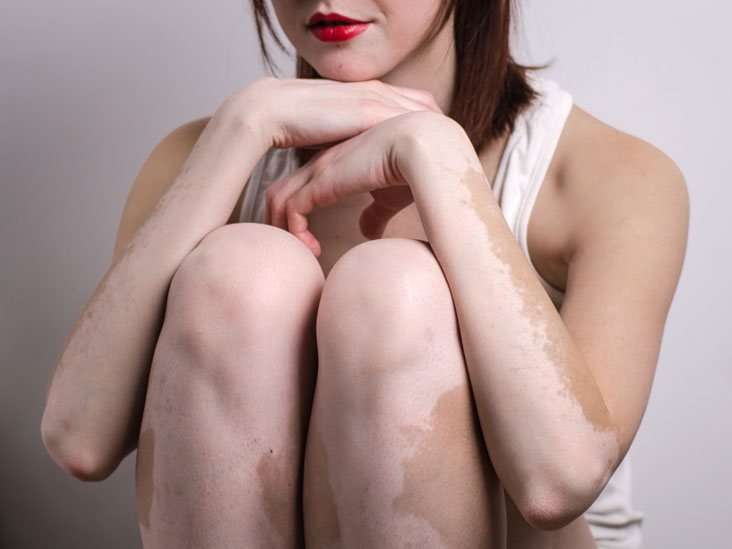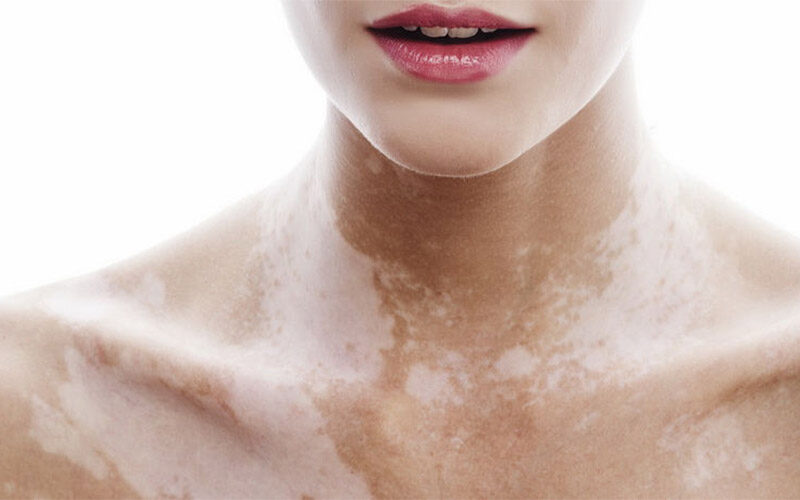The amounts of skin problem cases are huge in number, though most unexpected major skin problems occur due to harmful radiation effects. Whenever there is a chance of going outdoors, make sure to use sunscreen before facing the rays from the sun. The best way to keep updating your dermatologist by using personalized Symptom Tracker, which helps to know the condition by regularly reporting the signs of a particular problem. It helps the doctors to know how severe the condition is.
About this disease

Vitiligo is a skin disease which occurs due to the absence of pigment (skin color) in the skin. The color of skin determines the presence of melanin (melanocytes) which gives pigment to your skin, hair, and eyes. Most of the researchers believe that it is a long term condition, though it is not contagious as well as not a life-threatening disease. This problem happens when the melanin cells die, even may stop functioning. Lack of melanin content is the main reason due to which this skin disorder occurs. It happens to all skin types; though it affects the entire body, not a particular body part in specific. Though most of the people might feel under stress due to their appearance, once the disease starts showing patches of white color on their body skin.
Though, the skin problem is not a major threat as most other diseases are. It is classified into two types based on the effect: segmental, which affects on a particular side of the body; whereas non – segmental, affects the skin as it expands over some time. Most of the cases which doctors have handled are non- segmental. Non –segmental is considered as the most common problem of this skin disease.
Causes
As of now, the causes of this disease is not known much as many others. This skin condition occurs due to the loss of melanocytes ( cells which produce pigments, better known as melanin) leaves large white patches on the skin. Most of the doctors claim that it is hard to identify the reason why the cell dies, stop functioning. Few research institutes believe that vitiligo occurs due to heredity (the family history of having this skin problem), a weak immune system destroying these melanin-producing cells, exposure to harmful chemicals. Also due to radiation, it leads to sunburn, which most of the doctors have stated. There is no justified reason in this particular case. Though, most of the institutes have claimed with evidence that the probable cause of this skin condition is due to gluten eating.
Symptoms

Symptoms of vitiligo are different in many cases. It is not necessary that if one of your family members has this problem, it may pass on to the next generation.
1. The absence of skin color
A loss of melanin cells stops producing pigmentation. Color loss in the inner line of the mouth as well as in eyeball(retina).
2. Hair greying/whitening
Signs of hair whitening in your eyebrows, beard, etc.
3. Large white patches
White patches occur on your hands, other body parts. These changes are easily visible on people with darker skin.
Diagnosis

In the early stage, vitiligo is diagnosed with a wood light test conducted to know the effectiveness of this disease. To confirm the doctor’s evaluation, a tissue biopsy test is also conducted. A blood test is also conducted to know if there is another health problem in some cases.
Treatment
As of the recent scenario, there is no proper cure for vitiligo. Through several medicines, doctors can manage to reduce the symptoms. For skin related problems, one must consult a dermatologist. Though in some cases, few patients may feel stressed due to their appearance, at times, they are referred to a psychologist. There are few treatments which are done to control the symptoms from not creating major damage to them.
Doctors have suggested few treatments for curing the symptoms of vitiligo
1. Phototherapy
Phototherapy is one of the treatments done to vitiligo diagnosed patients. This treatment can be done at home as well as in a derma clinic, whichever is possible. By exposing the skin to an ultraviolet light lamp for a few weeks, it helps in re-pigmentation of the patient’s skin. It is essential to manage the time of exposure in a way that the skin does not get overexposed. The treatment is a success if the spots do not exist for more than 3 years. Though some patients may see no skin change due to re-pigmentation.
2. Topical therapy
The patches formed is treated with dermatologically tested cream, better known as a corticosteroid. It also has few side effects. Still, this cream helps in re-pigmentation in the affected skin areas. Calcipotriene, also termed as calcipotriol, is a cream in the form of Vitamin D, mixed with corticosteroid cream which is more effective than using either one alone. It helps in improving pigmentation in the affected skin area.
3. Surgery through skin drafting
If the phototherapy does not work well, surgery is another option for treating the patches formed. The procedure is mainly removing the small sections of normally pigmented skin by attaching them to the area where there is no pigment. This treatment is done in very few cases when small patches of vitiligo form.
4. Prescribed medication
Some doctors prescribe medicines for curing the patches occurred. Even though few improvements may bring relief to the patients. One of the medicines which help to stimulate the pigmentation melanocytes cells called afamelanotide.
Some doctors suggest using sunscreen lotion with an SPF at least 30 which protects from harmful sun rays. Few people prefer using makeup as a cover-up over the small patches of vitiligo.
Since it keeps on spreading in other areas of the body, so one needs to keep track of the symptom.
Symptom Tracker helps in recording regularly if there is a health problem; through a selected list of symptoms, one can easily choose the possible issue. It keeps track of every single health issue if one has. Day to day entry helps in creating reports which are easy for the doctors to diagnose, as they can start the treatment based on it.




